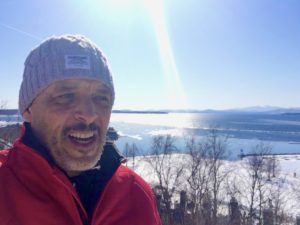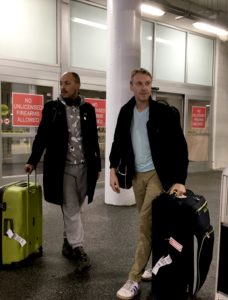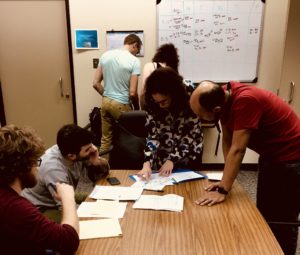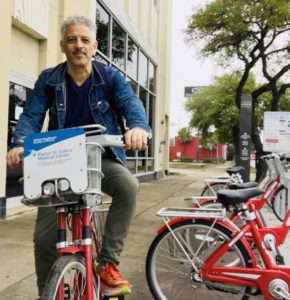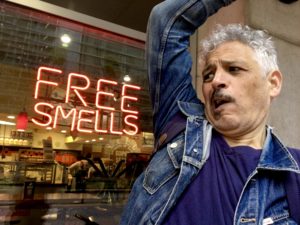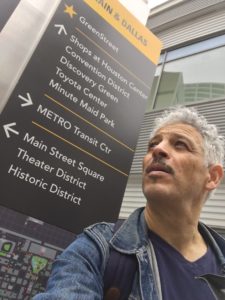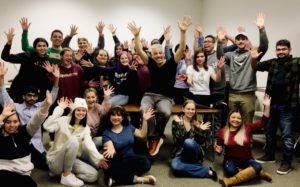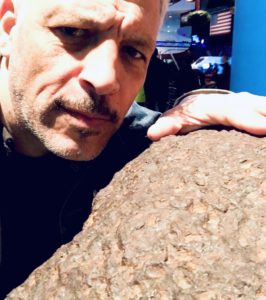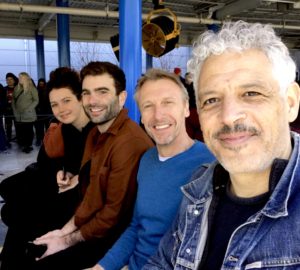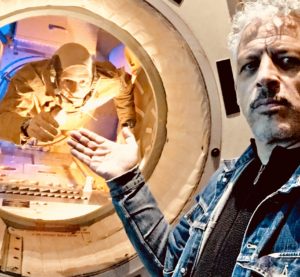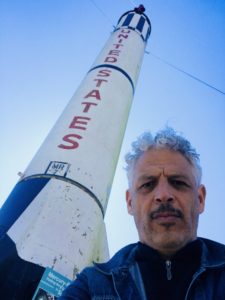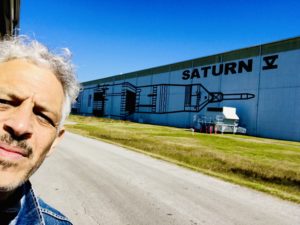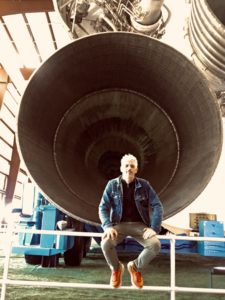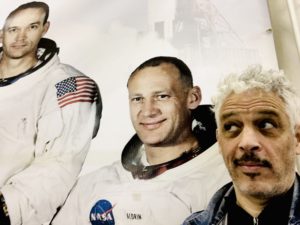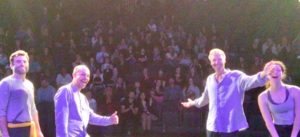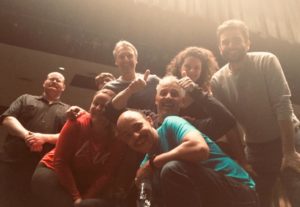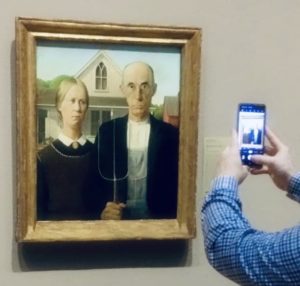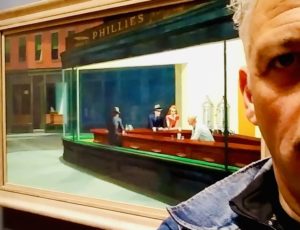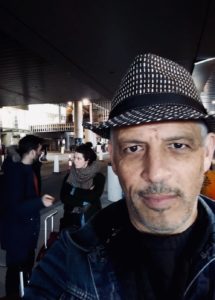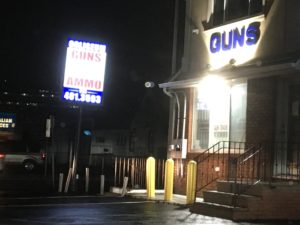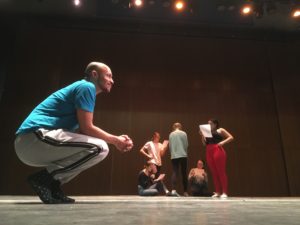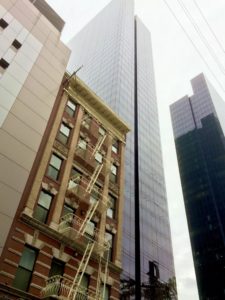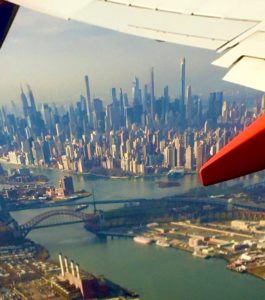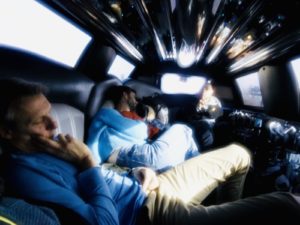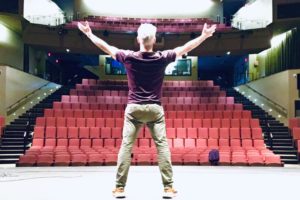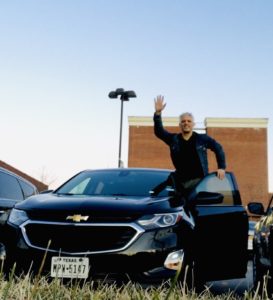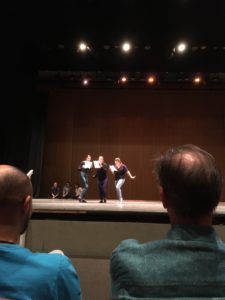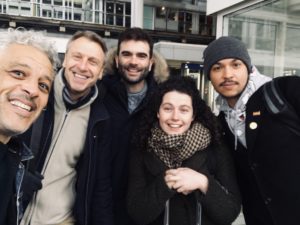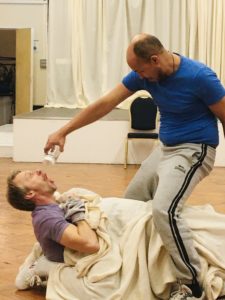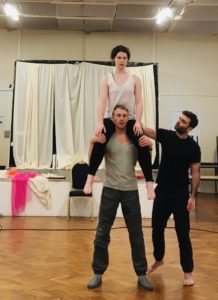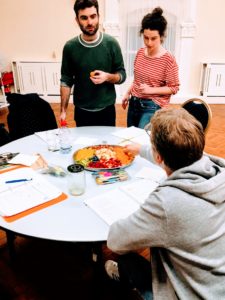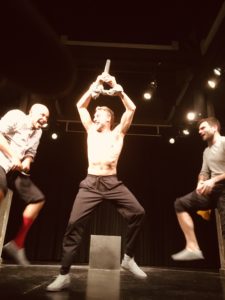By David Rubin
Sunday, February 23rd, Burlington, northwestern Vermont.
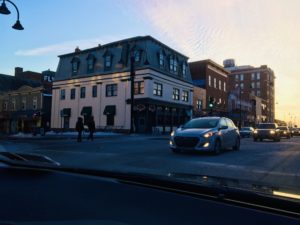 I’ve just watched the sun go down over the distant hills and mountains across Lake Champlain, looking towards upstate New York. A serene and memorable evening. Shame I didn’t have my camera/phone on me. I did get other pictures of what is a pretty town, with a relatively long history. The University was founded in 1791. It’s been body-shockingly cold here for most of the week, but quite a joy. Burlington is a small, ‘boutiquey’ town, with a famously progressive-in-nature population of just over 40,000. It is 300 miles north of Manhattan and has a great many visitors and fans, despite the biting cold.
I’ve just watched the sun go down over the distant hills and mountains across Lake Champlain, looking towards upstate New York. A serene and memorable evening. Shame I didn’t have my camera/phone on me. I did get other pictures of what is a pretty town, with a relatively long history. The University was founded in 1791. It’s been body-shockingly cold here for most of the week, but quite a joy. Burlington is a small, ‘boutiquey’ town, with a famously progressive-in-nature population of just over 40,000. It is 300 miles north of Manhattan and has a great many visitors and fans, despite the biting cold.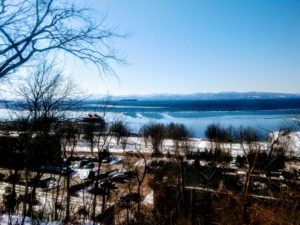
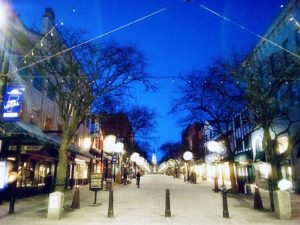 It is most renowned to me as being the place where, against all odds, Bernie Sanders became Mayor in 1981, winning by 10 votes (after a recount). It launched a career that now sees Bernie as a serious prospect for the presidency of the US of A! Locals tell me he succeeded in some wonderful ventures for the community here. All views here my own etc… but my hat’s in the ring for him to go all the way to the White House. He’s one of the good guys, with policies that benefit all. But enough politics. Opinions vary. Wildly.
It is most renowned to me as being the place where, against all odds, Bernie Sanders became Mayor in 1981, winning by 10 votes (after a recount). It launched a career that now sees Bernie as a serious prospect for the presidency of the US of A! Locals tell me he succeeded in some wonderful ventures for the community here. All views here my own etc… but my hat’s in the ring for him to go all the way to the White House. He’s one of the good guys, with policies that benefit all. But enough politics. Opinions vary. Wildly.
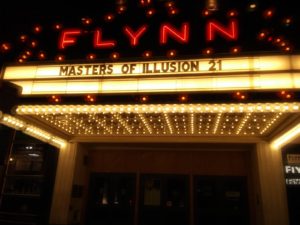 Not so our audience reactions this week, though. Five full house performances and five standing ovations. The University of Vermont hosted us at The Flynn Centre on Main Street, Burlington. Our first show was performed to an audience entirely of High School and University students, the rest to a wonderfully mixed demographic. Many stayed behind to chat with us after the shows and offered warm, intelligent conversation about the production, Shakespeare and life in Burlington.
Not so our audience reactions this week, though. Five full house performances and five standing ovations. The University of Vermont hosted us at The Flynn Centre on Main Street, Burlington. Our first show was performed to an audience entirely of High School and University students, the rest to a wonderfully mixed demographic. Many stayed behind to chat with us after the shows and offered warm, intelligent conversation about the production, Shakespeare and life in Burlington.
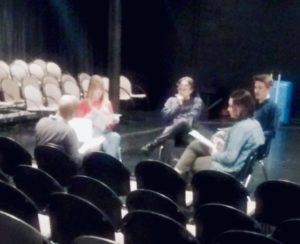 We also ran a lot of workshops here this week. Slightly different to other weeks, in that many of the workshops were one on one coaching sessions with acting/theatre students. Really enjoyable. The whole freezing cold week was.
We also ran a lot of workshops here this week. Slightly different to other weeks, in that many of the workshops were one on one coaching sessions with acting/theatre students. Really enjoyable. The whole freezing cold week was.
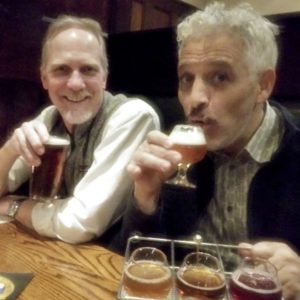 Our host, Andrew Barnaby, an English Literature scholar, was very friendly and helpful, ferrying us between classes on the coldest days in his beat up little motor. He offered up valuable insights into the monologues we were coaching students on, and joined us for beer and pub grub after our concluding performance.
Our host, Andrew Barnaby, an English Literature scholar, was very friendly and helpful, ferrying us between classes on the coldest days in his beat up little motor. He offered up valuable insights into the monologues we were coaching students on, and joined us for beer and pub grub after our concluding performance.
Next stop for us in Sacramento, California. Some warmth again. It’s fabulous how much of America we’re seeing. There is a lot of criss-crossing, though. And our carbon footprint for the tour is not good. We’re doing a lot of flying.
We are still improving the show each week, which is satisfying. The difficult Act V, where the five of us hop between some 15 characters, benefitting from further work on ‘stakes’ and pace this week. And again, further thanks to Arthur, who not only keeps the other character I play alive in more moments now (Antonio, that is, whose relationship with Prospero is one of the central stories), doing so by holding Antonio’s hat in his outstretched arm, but he even manages some ‘acting’ as I speak to the hat, with little twitches of reactions tipping the hat this way and that. It’s brilliant.
It’s a 3.45am departure tomorrow morning so into my cosy hotel bed I climb for an early night now. I hope to welcome you again next week.
Bye for now.
PS: Anyone back in London who’d like to see the production, there are two performances there on April 6th and 7th. 🙂

